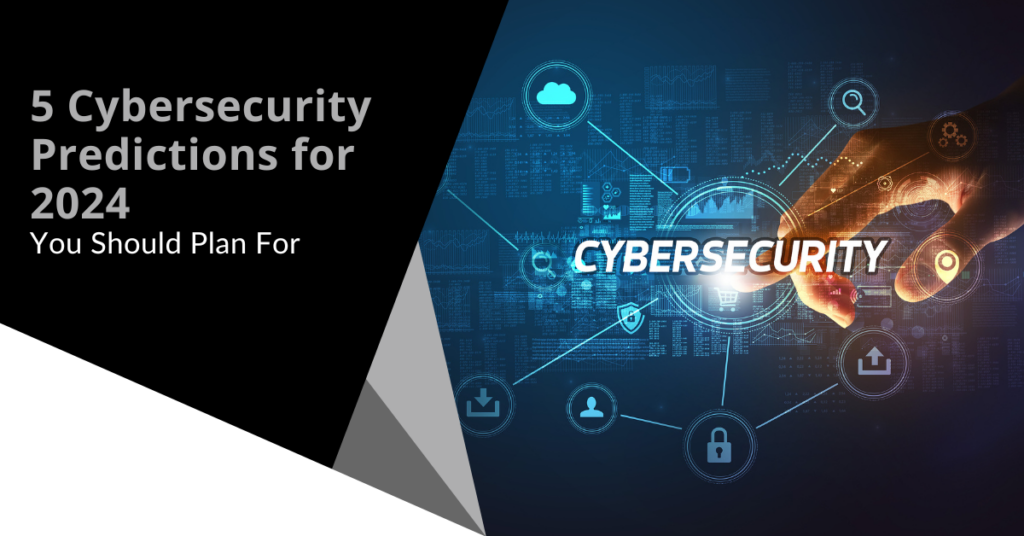Optimize protection strategies through expert cybersecurity and privacy advisory.
Wiki Article
Leading Cybersecurity Predictions for 2024: Keep Ahead of Emerging Dangers
As we approach 2024, the cybersecurity landscape is poised for substantial change, driven by emerging dangers that organizations should not just expect yet likewise purposefully address. The surge of AI-driven cyberattacks, combined with significantly innovative ransomware techniques, highlights the immediate requirement for innovative defenses. Furthermore, the growing variety of IoT gadgets presents brand-new vulnerabilities that might be exploited. With regulative modifications imminent and a critical emphasis on cybersecurity training, it is essential for companies to reassess their methods to remain durable. How ready are you to navigate these developing difficulties?Rise of AI-Driven Attacks
As organizations progressively take on man-made intelligence technologies, the possibility for AI-driven attacks is ending up being a paramount worry in cybersecurity. Cybercriminals are leveraging AI to boost the refinement and efficiency of their attacks, developing a landscape where conventional protection measures may falter. These strikes can make use of artificial intelligence formulas to determine susceptabilities in systems and networks, leading to extra targeted and harmful breaches.AI can automate the reconnaissance stage of an assault, allowing enemies to collect substantial quantities of data quickly (cyber attacks). This capacity not only reduces the moment called for to launch a strike but additionally increases its precision, making it harder for protectors to expect and alleviate dangers. Additionally, AI can be used to create convincing phishing systems, generate deepfake content, or manipulate data, additionally making complex the cybersecurity landscape
Organizations must prioritize the assimilation of AI-driven cybersecurity options to counter these emerging dangers. By utilizing advanced threat detection systems, companies can improve their capability to identify and counteract AI-generated strikes in genuine time. Continual investment in training and recognition programs is likewise critical, as it outfits workers to identify and react to possible AI-driven threats properly.
Boosted Ransomware Class
The surge of AI-driven assaults is not the only pattern reshaping the cybersecurity landscape; ransomware attacks have also developed, coming to be significantly sophisticated and targeted. As cybercriminals refine their methods, companies deal with increased threats that need flexible techniques to minimize prospective damage.
Modern ransomware hazards now utilize advanced methods, such as double extortion, where attackers not just secure information but additionally intimidate to leakage sensitive information if their demands are not fulfilled. This adds an additional layer of stress on victims, commonly compelling them to pay ransoms to shield their online reputations and consumer depend on.
Furthermore, using automated tools and device discovering algorithms by perpetrators has structured the strike process, allowing them to identify susceptabilities much more successfully and customize their tactics against specific targets. Such growths have led to a worrying rise of attacks on crucial infrastructure, healthcare systems, and supply chains, emphasizing the requirement for robust cybersecurity structures that focus on real-time danger detection and feedback.
To respond to these evolving hazards, companies need to invest in comprehensive training, progressed safety modern technologies, and event reaction prepares that integrate lessons gained from past ransomware cases, guaranteeing they remain one action in advance of increasingly intricate strikes.
Growth of IoT Vulnerabilities
With the fast development of the Web of Points (IoT), vulnerabilities connected with these interconnected tools have become an essential worry for organizations and individuals alike. The proliferation of smart gadgets, from home appliances to industrial sensors, has created a large assault surface area for cybercriminals. Lots of IoT devices are released with minimal protection protocols, frequently using default passwords or obsolete firmware, making them vulnerable to exploitation.As devices end up being interconnected, the capacity for massive assaults increases. Jeopardized IoT gadgets can serve as entrance factors for opponents to infiltrate even more safe networks or launch Distributed Rejection of Service (DDoS) attacks. The absence of standardization in IoT safety and security measures more aggravates these susceptabilities, as varying suppliers carry out differing levels of security
Furthermore, the increasing class of malware targeting IoT gadgets poses significant risks. Hazard actors are continually establishing brand-new methods to exploit these weak points, resulting in potential information violations and unauthorized accessibility to delicate info. As we relocate right into 2024, companies have to prioritize IoT security, carrying out durable procedures to guard their networks and alleviate the threats connected with this swiftly expanding landscape.
Regulative Modifications Influencing Protection

In 2024, we expect to see much more rigid conformity demands for organizations, particularly those that make or deploy IoT gadgets. The introduction of regulations such as the European Union's Cyber Strength Act and updates to existing frameworks like the NIST Cybersecurity Structure will stress safety and security by layout. Organizations will certainly be mandated to execute robust safety and security steps from the first phases of product development, ensuring an aggressive stance versus potential susceptabilities.
In addition, regulative bodies are likely to enforce considerable penalties for non-compliance, engaging businesses to focus on cybersecurity investments. This change will certainly not just enhance the total safety and security posture of organizations however will also cultivate a society of responsibility in securing user information. As regulations tighten, the onus will increasingly fall on companies to show compliance and protect versus the ever-evolving hazards in the electronic landscape.
Focus on Cybersecurity Training
Organizations' dedication to cybersecurity training is ending up being increasingly important as hazards advance and strike vectors increase. With cybercriminals constantly developing advanced techniques, it is paramount for employees in all degrees to recognize the risks and acknowledge their duty in minimizing them. Comprehensive training programs equip staff with the understanding and abilities required to recognize prospective dangers, such as phishing assaults, social design methods, and malware.Additionally, a culture of cybersecurity recognition fosters vigilance amongst employees, reducing the probability of human error, which stays a significant vulnerability in numerous organizations. Regularly updated training modules that mirror the most up to date hazards will ensure that team remain enlightened and capable of responding properly.


In 2024, companies will likely focus on continuous education and simulation exercises, enabling workers to exercise their reaction to real-world scenarios. Partnership with cybersecurity experts for customized training options might additionally become extra commonplace. Ultimately, spending in employee training not just reinforces a company's defense 7 Cybersecurity Predictions for 2025 posture however likewise grows an aggressive approach to cybersecurity, enhancing the notion that safety is a shared responsibility across the business.
Conclusion
In conclusion, the cybersecurity landscape in 2024 will be formed by the increase of AI-driven strikes, increasingly sophisticated ransomware methods, and the growth of susceptabilities associated with IoT devices. A solid emphasis on thorough cybersecurity training will certainly be vital in growing a business society durable to arising dangers.Report this wiki page